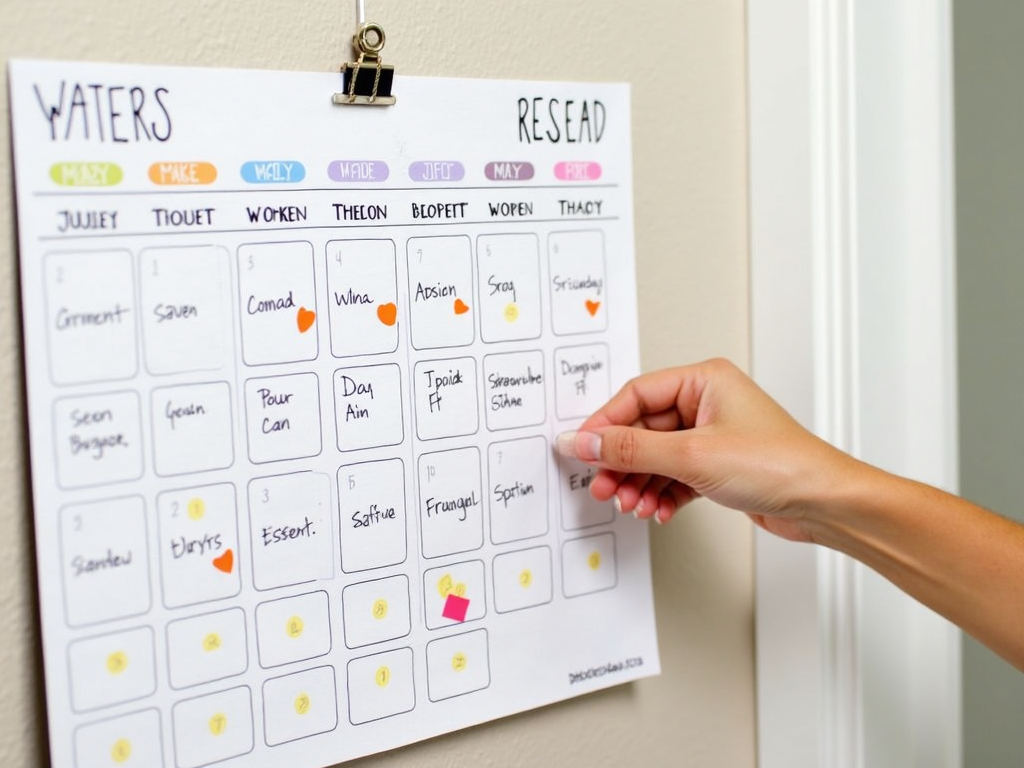Staying committed to your fitness goals can be challenging, but it's essential for achieving long-term health and wellness. In this article, we'll explore practical tips and strategies to help you maintain motivation and consistency in your fitness journey. From setting realistic goals to incorporating fitness into your daily life, these insights will empower you to stay on track and reach your full potential.
Tip 1: Set Realistic and Specific Goals
One of the most important steps in staying committed to your fitness goals is setting realistic and specific targets. Vague goals like "get in shape" or "lose weight" can be overwhelming and difficult to measure. Instead, aim for specific, achievable objectives that you can track and celebrate along the way.
For example, instead of saying "I want to lose weight," try setting a goal like "I want to lose 5 pounds in the next month by exercising three times a week and eating a balanced diet." This goal is specific, measurable, and realistic, making it easier to stay motivated and focused.
When I first started my fitness journey, I set a goal to run a 5K race within three months. At the time, I could barely run a mile without stopping, but I broke down the goal into smaller, manageable steps. I started by running for just 10 minutes a day and gradually increased my time and distance. By the end of the three months, I not only completed the 5K but also developed a love for running that has stayed with me ever since.

Tip 2: Create a Structured Workout Plan
Having a structured workout plan can make a world of difference in staying committed to your fitness goals. A plan provides direction, helps you stay organized, and ensures that you're making progress toward your objectives.
One popular option is to participate in a 30-day fitness challenge. These challenges often provide a set routine for each day, making it easy to follow along and stay motivated. For example, a 30-day fitness challenge to lose weight might include a mix of cardio, strength training, and flexibility exercises, gradually increasing in intensity over the course of the month.
If you prefer a more personalized approach, you can create your own workout plan based on your goals and preferences. Start by determining how many days a week you can realistically commit to exercising, and then choose activities that you enjoy and that align with your goals. Be sure to include a variety of exercises to keep things interesting and to work different muscle groups.
When I was training for my first half-marathon, I followed a 12-week training plan that included a mix of running, cross-training, and rest days. Having a clear schedule to follow helped me stay on track and ensured that I was adequately prepared for the race.

Tip 3: Find a Workout Buddy or Join a Fitness Community
Social support can be a powerful motivator when it comes to staying committed to your fitness goals. Having a workout buddy or being part of a fitness community can provide accountability, encouragement, and a sense of camaraderie.
Working out with a friend or family member can make exercise more enjoyable and help you stay consistent. You can motivate each other, celebrate successes together, and even turn fitness into a fun, shared activity.
If you don't have a workout buddy, consider joining a fitness class or group. Many gyms and community centers offer group exercise classes, such as yoga, spin, or dance, where you can meet like-minded individuals and build a support network.
I remember when I first joined a local running club. At first, I was nervous about running with others, but I quickly found that the group was welcoming and supportive. We would meet for weekly runs, share tips and advice, and even organize social events. Being part of the club not only helped me improve my running but also made the experience more enjoyable and fulfilling.

Tip 4: Track Progress and Celebrate Small Wins
Tracking your progress is essential for staying motivated and committed to your fitness goals. By monitoring your achievements, you can see how far you've come and identify areas for improvement.
There are many ways to track progress, such as keeping a workout journal, using a fitness app, or taking regular measurements. Choose a method that works for you and be consistent in recording your activities and results.
In addition to tracking progress, it's important to celebrate small wins along the way. Acknowledging your achievements, no matter how small, can boost your confidence and reinforce your commitment to your goals.
For example, if your goal is to lose weight, celebrate when you reach a milestone, like losing 5 pounds or fitting into a smaller clothing size. If your goal is to increase strength, celebrate when you can lift a heavier weight or complete more repetitions.
When I was working toward my first pull-up, I tracked my progress by noting how many assisted pull-ups I could do each week. Each time I was able to decrease the assistance or increase the number of reps, I felt a sense of accomplishment. Finally, when I was able to do my first unassisted pull-up, it was a huge milestone that motivated me to keep pushing forward.

Tip 5: Mix Up the Routine to Avoid Boredom
Doing the same workout routine day after day can lead to boredom and decreased motivation. To stay committed to your fitness goals, it's important to keep things fresh and exciting by mixing up your routine.
Try incorporating new activities or exercises into your workouts. For example, if you usually run on a treadmill, try running outdoors or taking a dance class. If you typically do strength training with weights, try bodyweight exercises or resistance bands.
You can also vary the intensity, duration, or frequency of your workouts to keep things interesting. For example, alternate between high-intensity interval training (HIIT) and steady-state cardio, or try a longer, slower workout one day and a shorter, more intense session the next.
When I started feeling bored with my usual gym routine, I decided to try rock climbing. It was a completely new challenge that worked different muscle groups and required mental focus. Not only did it break up the monotony, but it also helped me develop new skills and meet new people.

Tip 6: Prioritize Recovery and Rest
While it's important to stay active and consistent with your workouts, it's equally important to prioritize recovery and rest. Overtraining can lead to burnout, injury, and decreased motivation, so it's crucial to listen to your body and give it the rest it needs.
Make sure to include rest days in your workout plan, and don't be afraid to take an extra day off if you're feeling particularly fatigued or sore. On rest days, you can engage in light activities like walking or stretching to promote recovery.
In addition to rest days, consider incorporating active recovery techniques, such as foam rolling, massage, or yoga, to help your muscles recover and reduce soreness.
When I was training for a marathon, I learned the hard way that rest is just as important as the training itself. After pushing myself too hard and skipping rest days, I ended up with a stress fracture that sidelined me for weeks. Since then, I've made a point to prioritize rest and recovery, and I've found that it actually helps me perform better in the long run.

Tip 7: Incorporate Fitness into Daily Life
To stay committed to your fitness goals, it's helpful to make physical activity a natural part of your daily life. Look for opportunities to incorporate fitness into your routine, such as taking the stairs instead of the elevator, walking or biking to work, or doing bodyweight exercises during TV commercial breaks.
You can also involve your family in your fitness journey by planning active outings or workouts together. Family fitness activities, like hiking, swimming, or playing sports, can be a fun way to bond while staying active.
By making fitness a habit and integrating it into your lifestyle, you'll be more likely to stick with it in the long term.
When my kids were younger, we started a tradition of going for a family bike ride every Sunday morning. It was a great way to spend time together, get some exercise, and explore our neighborhood. Now that they're older, we still make time for family fitness activities, and it's become a cherished part of our routine.

Summary
Staying committed to your fitness goals requires dedication, motivation, and a strategic approach. By setting realistic and specific goals, creating a structured workout plan, finding social support, tracking progress, mixing up your routine, prioritizing recovery, and incorporating fitness into your daily life, you can overcome challenges and achieve lasting success. Remember, fitness is a journey, not a destination, so be patient with yourself and celebrate every step along the way.
Discuss Here